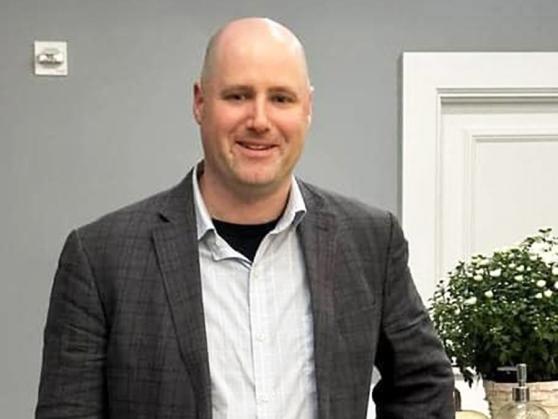‘An intolerable burden’

Nigill Johnson, who left a New York City job and premium-free health insurance to become a state worker, relinquished several days of vacation time annually to lower her health care premiums.

Gary Hoffman, an AFT member in New Hampshire, pays $197.53 every two weeks for health coverage for himself and his wife, a cancer survivor. He estimates his out-of-pocket medical costs will exceed $6,000 this year.
For decades, New York City public school educators and other city workers have enjoyed premium-free health coverage that has made them the envy of the rest of the nation’s labor force, both public and private sector.
They paid a price, literally, for that status, having accepted less in salary increases over the past half-century to offset New York City paying the full premium tab. The municipal union leaders’ wisdom in placing so much value on that benefit has grown increasingly obvious over the past 20 years as health care costs rose dramatically and coverage became drastically more expensive, even at large corporations.
“We’re one of the few unicorns left, and we’re the largest unicorn, by far, with a target on our back,” UFT President Michael Mulgrew said at the Nov. 15 membership meeting of the Retired Teachers Chapter.
In its fight to maintain premium-free benefits, the Municipal Labor Committee, the umbrella coalition of 100-plus municipal unions of which the UFT is a member, is focused on finding significant health savings by battling exorbitant hospital rates and securing new health plan contracts that provide comparable benefits for less.
The UFT stands alone among affiliates of the American Federation of Teachers in preserving premium-free coverage for members. Kyle Arnone, the director of the AFT’s Center for Collective Bargaining, said an Ohio affiliate that had for years been the other union local providing premium-free coverage was forced to relinquish it during the pandemic.
Educators and other AFT members throughout the nation, Arnone said, routinely pay 10% of the premiums for individual coverage and, in many cases, 20% or higher for family plans.
“Many of our locals are just getting hammered by the rise in the costs of health care,” said Rob Weil, the AFT’s director of field programs for educational issues.
In state and local governments, the employees’ share of individual-plan costs averages 14% and workers have to pay 29% of the cost for family coverage, according to the U.S. Bureau of Labor Statistics in a March 2022 report.
A 1985 contract required New York State workers, including NYSUT members outside New York City, to pay 10% of the premiums for single coverage, which had long been free, while their share of family coverage remained at 25%.
Nigill Johnson got a taste of the difference between city and state coverage in 2008, when she left her job with the Manhattan District Attorney’s Office investigating fraud in city benefits programs for a similar one with the state Office of the Medicaid Inspector General. As a state worker, she started having about $90 deducted from each biweekly paycheck for individual coverage.
In 2012, after then-Gov. Andrew Cuomo threatened to lay off thousands of state workers if their unions didn’t agree to them paying even more toward health insurance, the share of premium costs that state workers shouldered rose to 16% for individual coverage and 31% for family plans.
Johnson gave birth to twins that year, but couldn’t afford the family plan, so she and her husband used his construction-union health coverage for the children. In 2018, when the cost of her individual plan rose to $190 per paycheck, she gave it up to go on her husband’s plan as well.
In 2021, when her husband lost his health coverage, she reenrolled with the state plan for individual coverage, but she said the 2% annual pay increases from her union contract didn’t keep pace with the premium increases and she found herself struggling to make ends meet.
Johnson said she began paying just more than the minimum on her credit-card balances. “I wasn’t shopping as much,” she said. “I started washing my hair at home instead of going to the beauty parlor.”
To get her share of the individual-plan premiums down to $22.35 every two weeks, Johnson agreed to relinquish several days of vacation time annually.
Educators outside New York City face similar headwaters. Gary Hoffman, a member of AFT Local 1044 who is in his 20th year of teaching at Fairgrounds HS in Nashua, New Hampshire, pays $197.53 every two weeks for health coverage for himself and his wife, a cancer survivor. He estimates his out-of-pocket medical costs will exceed $6,000 this year.
Private-sector workers nationwide contribute even more toward their health care benefits. The Bureau of Labor Statistics reported that employees in private industry on average paid 22% of the premiums for individual coverage and 33% for family plans.
Kathy Beaver, a flight attendant for a major airline, for years was covered under the New York City health plan of her husband, a Baruch College employee. After they divorced, however, she said she moved to private-sector coverage that “was drastically different.” She pays about $250 a month in premiums and has a $1,350 annual deductible, after which she pays 20% of most of her medical costs and $300 for each emergency room visit.
AFT President Randi Weingarten said the federal government needs to address these rising health care costs that have become “an intolerable burden” on all Americans.
“The health care system is broken, as premiums and deductibles continue to skyrocket,” she said. “Employers — including school districts and hospitals — are looking to pass more costs onto our members, eating into the modest raises and benefits they’ve won.”
Mulgrew said the national picture shows why the health care fight in New York City is so important.“We will continue to push for national solutions,” he said, “but in the meantime, we will work hard to rein in costs to preserve high-quality premium-free health care for all our members.”